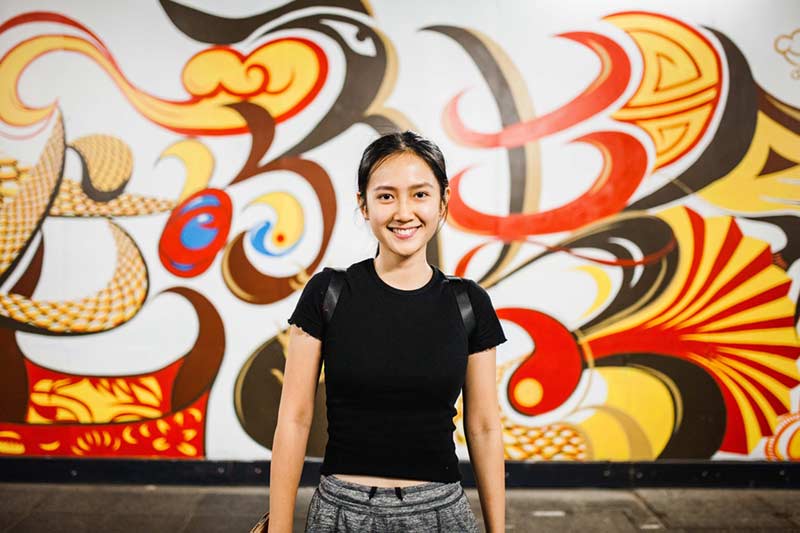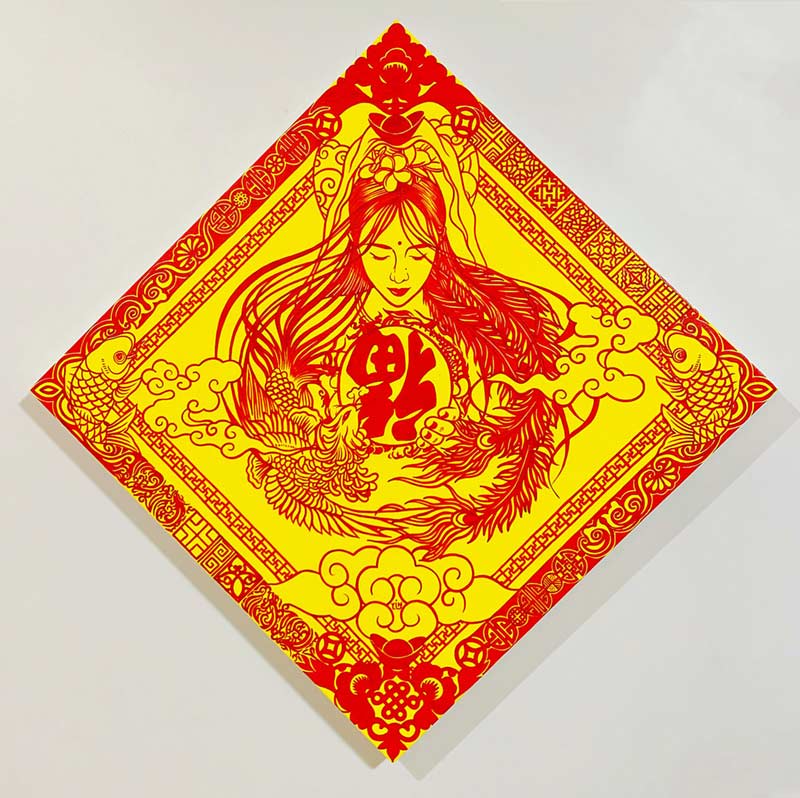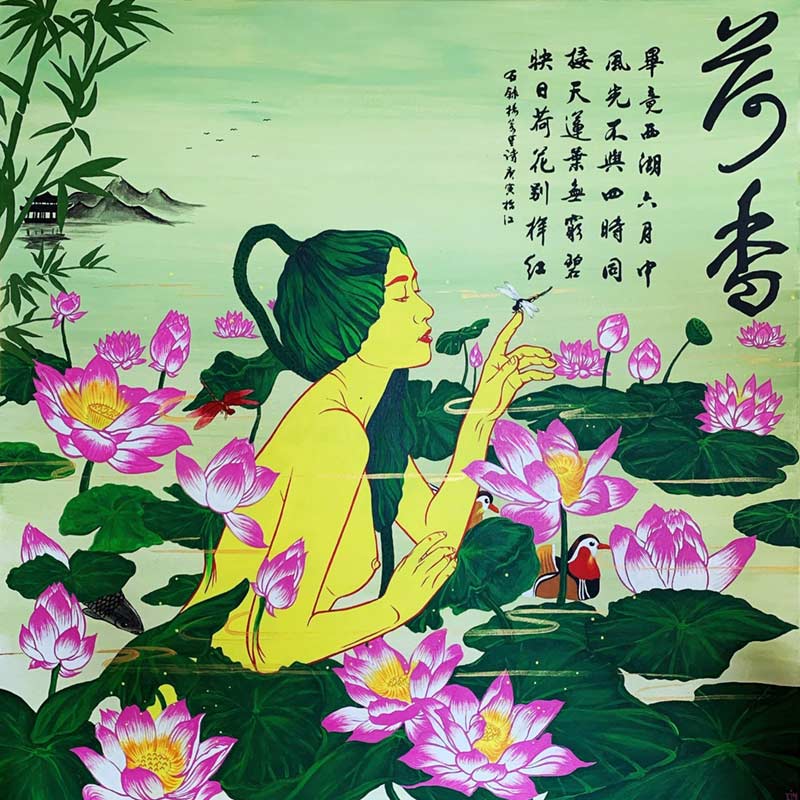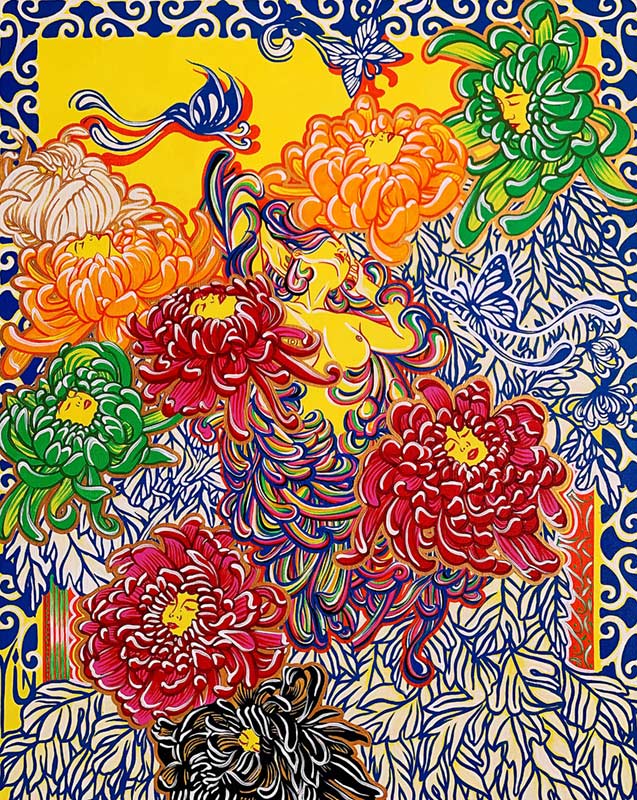
“I consider myself as an artwork made of Chinese and Australian elements. A cross and mix between distant territories with different hues. An anomaly to culture and a product of freedom. My Australian roots gave me the liberty to express myself.
Growing up with freedom allowed me to be curious. I yearned for the other half of my identity. My skin color has a shade of yellow, and it is a constant reminder of what else I am made of. I hungered for the Yin to my Yang.

I discovered who I am by expressing it through art. My Chinese heritage is rich in tradition. It has a lot of representation—a lot of symbolism. I was reconnected to nature: the flowers, the rivers, and many of earth’s existential wonders.
I stepped back in time, and I was opened to a soulful discovery.
China’s silence, Zen, and natural beauty is a refreshing contrast to today’s fast-paced and high-tech lifestyle.
My art represents my peculiarity.
My mixed races’ opposing nature is shown by the contrasting pieces and colors using ink and acrylic.
My passion for rekindling my Chinese heritage inspires my work. While the liberty to express by painting nude bodies is in respect to my unbound Australian upbringing.
My story is reflected in my art. My work, as well as myself, combines tradition and freedom”. – Yin Lu

FORTUNE (2020)
The intricate details from the borders to the main image pay homage to the sharp art of paper cutting style. The same amount of care, precision, and perseverance are the key to bring this piece to life.
As if cut from a red-colored paper against a yellow backdrop, “Fortune” elevates China’s two most important colors.
China’s ancient mysteries lie in its firm belief in superstitions. Believing that there are forces that have the power to attract good luck and fortune, the Chinese people are given more avenues to celebrate.
The middle is an inverted Chinese calligraphy that reads, “Fu.” It is purposely written in reverse so that the sign will attract fortune and trap it inside the house when it’s posted on a wall. But instead of a home, the sign is in a magical ball, held close to my heart. I am Guanyin, the Buddhist Bodhisattva of compassion, also known as Avalokitesvara Bodhisattva.
The magical ball is burning in dragon flame, while my hair slowly transforms into a phoenix. With the help of these ancient spirits, I am deep in prayer. I call on love and compassion, which I will return to those in need.
The dragon is the amalgamation of reptiles and mammals that gives me vigor and might. The phoenix is the fusion of all feathered creatures, giving me grace and freedom. The cooperation of these opposing spiritual elements is embedded in my artistic journey. My body is also of contrasting DNAs, but I manage to keep my balance through my art.
“Fu” will keep this spirit and balance in my heart so that I can continue to spread compassion.

THE LOTUS BLOSSOM (2020)
Authentically Chinese, “The Lotus Blossom” highlights one of the culture’s most important values—purity.
This work showcases numerous Chinese ingenuities. The calligraphy, bamboo plants, distant mountains, and temple are aesthetically Chinese. Above all, the lotus plant is revered for its wholesome nature.
The calligraphy shows the work’s respect for Chinese poets. Tracing back to ancient times, poets compare young women to lotus flowers. Compared to the flower, young women were praised for remaining untainted despite a tempting environment. They are like lotuses blooming despite the silt. This piece is an ode to Yang Wanli’s poem, “The Lakeside Temple at Dawn.”
The poem is directly illustrated in this painting, “Green lotus leaves outspread as far as the boundless sky; / Pink lotus blossoms take from sunshine a new dye.” The woman is shown to be the flower that blossomed from the lotus’ stem.
She is pure as a lotus. Pale in colors, the style is inspired by the traditional ink painting techniques.
The lotus’ purity spreads out in this work. All the elements in the painting render an authentic Chinese picture. The lotus is reminiscent of my own childhood before I migrated to another continent.
I remember a more innocent time. My mind was free of impurities. I was young and careless. My heart knew no hate. It was a time full of love and affection.

“CHRYSANTHEMUM PORCELAIN”
merges two authentic Chinese antiques. Chinese porcelain delights the homes of many families around the globe. Its famous blue and white hues dominate this painting, giving this the same fragile look. Flowering out of the brittle-looking artwork are chrysanthemums of five colors, each symbolizing traditional values.
While the porcelain colors take over this piece, the color that represents my heritage remains a staple: yellow. Yellow is a background representing China. Yellow embodies the color of my skin. Yellow represents the imperial power of the Ming and Qing dynasties. Through the dynamics of the colors in this work, yellow is the supporting backbone.
Chinese porcelain’s fame has traveled from the imperial courts of Ancient China to the homes of families of many nations. It symbolizes migration and the contribution of the Chinese around the world. On the other hand, chrysanthemums are ironically bountiful in the autumn season.
When the leaves of most trees fall, chrysanthemums rise. They express hope even when everything seems to fail. Chrysanthemums blossom in five key colors. Red represents vigorous emotions like passion, joy, enthusiasm, and hope. Black expresses seriousness, stability, and the darkness of the night.
Yellow is bright, showing wealth and gentleness. White is all things pure, simple, and sacred. Lastly, green symbolizes life’s health, grace, and cultivation. These colors are also seen in the wings of the yellow-skinned fairy.
The colors of the flower mirror the five significant flavors, hoping that her flight will be flavourful.
Above all these, “Chrysanthemum Porcelain” symbolizes balance. The porcelain’s vulnerability is juxtaposed with the flower’s resilience—another yin and Yang of a Chinese woman.

